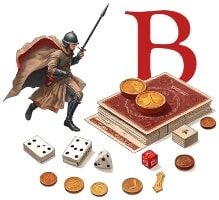"Remember that the man who always fights one more round is never whipped."
- James J. Corbett
Preface
Ranking the greatest boxers has always come with its pitfalls and has ignited much debate and settled little. Let's begin by asserting what this book is not about.
This is not about ancient Greek boxers or the boxers of the London Prize Ring, except where those boxers crossed over to the modern era. In such cases their LPR achievements will be included in their ranking.
This is not about the social impact or popularity of a fighter. I don't care if Jack Dempsey was the most popular athlete of all time, that Joe Louis crushed the color barrier in boxing, that
Muhammad Ali stood up to the U.S. Government over the Vietnam draft or lowered the standards of sportsmanship in boxing, or that the Klitchko brothers have proven that you can box and earn a PHD.
This is not a hypothetical time-machine where modern boxers will be pitted against old- timers. Briefly, my opinion on that is that modern heavyweights would murder the old-timers and that the old-timers in the lighter weights would eat the modern guys alive. But that is just an opinion that should be discussed elsewhere.
This is not an arbitrary "Top 10", "Top 40" or "Top 100" list. It is also not a list of champions. Some of these fighters never won—and in some cases were not permitted to fight for—a championship. Never forget, that championships and titles are political intrusions that represent social pressures applied to fighters by non-fighters. Titles and championships are essentially environmental factors. This is not an isolation study. I am not going to pretend that Roberto Duran the lightweight was a different person than Roberto Duran the welterweight. He was a fighter, and he chose to fight at various weights and will be rated as an actual whole human being, not as a sportswriter's statistical cipher, or a boxing writer's literary "ripe fruit" picked at its peak of metaphoric perfection. We are also not dealing in percentages. To say that a fighter with 40 bouts and 10 knockouts was as successful inside the ropes as a fighter with 400 fights and 100 knockouts is ridiculous, and is nothing more than fantasy.
This is not about technical innovation. Tommy Ryan, Kid McCoy, Jack Blackburn and Holman Williams are not rated on the level of influence they had on the technical evolution of boxing mechanics, but on what they accomplished Inside The Ropes.
Chapter 1: The View
How can an observer determine greatness?
Methodology
Each fighter is awarded points for every single effort he made in the ring, with a variance in value from .5 to 9.0. All of the fighters under consideration were in the 1999 Boxing Register, The 100 Greatest Boxers of All Time by Burt Randolph Sugar, or were considered by this author [in 3 cases] to be glaring omissions from one of these works. Some recently retired champions [such as Tyson and Chavez] are included for context.
Bonus points are awarded for quality of opposition and big event performance. I have attempted to be fair to cross-over LPR fighters and old-time Black fighters. But, now as then, I think they get slighted in this [my] study. This study favors fighters that have campaigned since World War Two simply because modern boxers get more credit for quality of opposition. There are now more titles and more weight classes than the old-timers could have dreamed of.
Also, since there are in 2011 only 10 boxers for every 100 boxers there were in 1911, it is much easier to get a fight with a top ten opponent or for a title then it was in Boxing's heyday. Consider that all of the public attention, coaching, managing and athletic effort that is now funneled into the NFL, NBA and UFC was once directed into boxing—all year long! Think about that for a whole minute please.
Ultimately I would like the reader to keep in mind that this ranking method is just an access ramp permitting our perceptual handicaps to be overcome so that we can see the fighters of the past in the same light as those from our time. This method comes with its own bias' but is not an end unto itself, just a beginning.
Bias
I am biased. Every effort such as this has been skewed. The typical sports fan over 50 thinks the current athletes are mere shadows of those that competed in his youth. Likewise, the fighters that competed in his father's day were just not as evolved and could not possibly standup to their new and improved counterparts. Then there are the history buffs that say everything gets better the farther back you go; that man's journey has been nothing more than a dreary descent from some incomparable state of grace.
I am attempting to overcome my bias by using an objective point system and then, by running a race. Yes, a race. I used a race as an inclusive model for ranking the fighters. Every type of race has Leaders, a Chase Group, a Pack, and Stragglers. The problem I faced was where to break these numbers? You see, by the time I was done compiling the fighters' records I knew who scored where. I found myself considering adjusting the number breaks so that one of my favorite fighters would be bumped up to the Leaders from the Chase Group. You see, I can't be trusted anymore than the rest of the boxing geeks out there.
My answer to overcoming my own generational, political, hometown and stylistic bias is this: after I compile the numbers, I will give the numbers only, to Steve Jansen, a big sports fan and the best mathematician I know. Steve will decide what numbers constitute the Pack, the Stragglers, the Chase Group and the Leaders, not by making arbitrary rankings but by seeing where the numbers naturally cluster.
Steve has pointed out that we should eventually use percentages derived from an athlete's performance in his prime to do the ultimate quality analysis. Admittedly this study does favor quantity, but only if the fighter won. So, what we have is something that is differently flawed than other attempts at ranking Boxing's best. My intention is to eventually use these findings as a basis for the type of study that Steve has suggested and then to combined the two methods in a holistic comparison of fighters.
Mister Jansen also informed me that the great fighters should be broken into five groups. I recall seeing two big clusters of numbers placed relatively close halfway to two-thirds back from the lead. So we can split the Pack into Front and Back.
I would like the reader to keep in mind that I am not thrilled with where some of my favorite fighters, and indeed the man I thought of as the best fighter ever, landed in these rankings. Remember, this is not "who could beat who" but "who accomplished what in their time". I intend for this ranking method to raise more questions that will naturally lead me as the author to launch various inquiries based on these findings.
Let us remember that all of these men were great in their time, and, until that mad-scientist/boxing buff next door gets that time-machine up and running, we'll just have to continue playing "what if". That is not such a great imposition. Because not knowing is half of the fun.
Adjustments
Because of the extreme length of the bouts, dangerous equipment then in use, and techniques that would now be ruled fouls that were permitted, fighters who were active before 1892 get a +20% adjustment in their score. I believe this to be far too low, but it is something.
Because of the extreme length of bouts fighters active between 1892 and 1910 get a +10% adjustment. These fighters also fought many [sometimes hundreds] of amateur and exhibition bouts that were far more dangerous and competitive than the typical modern bout seen on cable TV.
Transitional fighters who campaigned in both of the above periods get a 30% bump for adaptability. The fighters of the 1880s were fighting bare-knuckle or with driving gloves. Fighting with such gloves requires skills no different than fighting without gloves. Beginning in 1892, bouts were generally conducted with padded mittens, or boxing gloves. Punching with padded gloves requires a different skill set. This had been common knowledge for over a century, with amateurs called "sparrers" often besting the pros called "pugilists" in the gym, but not mixing it up with them in the prize ring.
Also, the few cross-over champions and contenders fought many unrecorded exhibitions, which would be recorded today, and they might have to knockout an opponent a dozen times [by modern standards] or fight for 40 3-minute rounds to get a single win. These men were very special and their accomplishments largely lost to time simply because their sport was just becoming legalized and record-keeping was in its infancy. Also, many early bouts for which fighters were compensated, which were fought without headgear, and according to the same rules as the pros, were categorized as amateur bouts. In light of all this the additional 10% bump seems a miserly consolation.
Fighters active between 1910 and 1921 who fought 20 to 40 round bouts but were not significantly active before 1910 get screwed. Someone has to get screwed. This is boxing.
No Decision bouts were generally won by the hall-of-famers in this study. Such bouts are scored as worth one point more than a draw and one point less than a decision win against the same fighter. Black fighters were not permitted to fight for titles often, were often only permitted to win by KO, and were sometimes in mortal danger if they won by KO. After other adjustments are accounted for, any Black fighter with significant activity before 1930 is awarded an additional 10% increase. This is low. These guys did not even qualify [according to the American politics of the day] to earn many of the bonus points awarded in this study.
Even with the adjustments above, this study still favors the fighters of the middle to late 20th Century.
Rankings
The fighters will be ranked from Great to Greatest, beginning with the Stragglers, moving through the Back of the Pack, then through the Front of the Pack, then through the Chase Group, and finally, coming up on the Leaders. Knowing the results kind of ruined it for me. So, do yourself a favor and don't skip ahead. This book will be initially published in a serialized format online. So, those of you discovering it by this route will not be in danger of ruining it for yourself.
Ranking the fighters in this cumulative abstract manner is only the beginning. The fighters will later be compared according to their unique achievements with other similar fighters of different eras. The question of Boxing's evolution or devolution [depending on your bias] will also eventually be discussed. The first step though is a rough ranking of the fighters under consideration. The fighter will only by ranked by his score. He will not be reduced to an assigned number like some contestant in an Orwellian time-warp. This shall leave room for newly recognized old-timers and newly retired modern fighters to be inserted into the race for the greatest according to their accomplishments only.
When two or more fighters have the same score, they will be listed in reverse alphabetical order in keeping with the back-to-front theme of this listing. These fighters are being examined according to the quantity of their quality, with one of those qualities being competitive longevity. This does skew the rankings towards quantity. Permit me one last comment in defense of this method.
Consider Alexander the Great. You know, there are many reasons why we don't call him Alexander "the Pretty Good". What made him great and how great was he? Should we rank Alexander as a general only in his prime against the Persian Empire? Or should we also consider the 18-year-old prince who led the slaughter of the Theban Sacred Band; the young king who subdued the barbarians of the north; or the crazed 30-year-old alcoholic megalomaniac who conquered the warlords of a mountainous land that neither the British Empire, Soviet Union or United States have been since able to lay claim to having subdued? Which of these was he? This answer is that he was all of these remarkable men and should be judged whole as one conqueror. I leave for another day the question of whether or not Alexander could have beaten Robert E. Lee on some magically leveled battlefield.
Other generals offer the same quandary to the historian. Do we rank Hannibal based on his brilliant Italian campaign, or do we also consider the Iberian and African campaigns?
How about Napoleon? Do we just look at Austerlitz and marvel without considering the Russian and Spanish disasters? Do we discount Waterloo because it was an ill-conceived comeback?
Chapter 2: Just Great Boxers
A look at those fighters who gained fame and fortune without compiling extraordinary records...
The Stragglers
Anyone that has fought less than 50 times is in danger of falling into this group. No great fighter scored under 100 points. Of the 147 great fighters ranked in this book 15, or 10% [rounded up] scored less than 228 points on this scale, which ranks the top fighter at 1,285. These are the stragglers, but they still achieved greatness. In some cases these are the most interesting of the greats; who had a strong impact on the sport or were actual icons or boogie men in their day. In their time they crushed all or most of their opposition and were envied, lionized and feared by ordinary fighters. Three of these men were actually national heroes. These men are worthy of much consideration.
Even today 50 professional bouts is the normal tally one expects to see when a heavyweight champion retires. In fact 7 of the 15 stragglers were heavyweights [3 were light heavies, and 5 lighter weights] not because they weren't as good as the smaller men, but simply because they did not chose to fight as often because they made more money per bout. Back in the day lighter weight fighters had to fight every two weeks just to eat. Ironically enough the modern heavyweight champions usually fought as often [and still do] as their predecessors. Conversely, modern lighter weight fighters fight about one tenth the bouts of the old-timers, either because they are just part-timers or big money-makers.
This goes to the heart of the study, people tend to achieve great things when they must face adversity. When you have to fight to survive you will fight harder and longer than the fighter with a better option. Many of the greatest efforts from early win streaks to stunning upsets were achieved by great fighters before their prime such as Thomas Hearns' 17 fight KO streak, or when well past their prime. Ali upsetting Foreman in Zaire is perhaps the best example this phenomenon.
Most fans believe modern boxers are much more skilled than their predecessors. So let me address this sentiment by describing the typical ascent of a modern boxer.
Once selected based on amateur performance and/or ability by a management team the prospect is fed about 10 harmless victims: smaller, older, less-skilled men. It was the same in old-times, but, old-time opponents were younger, tougher and more experienced than their modern counterparts. The first 10 bouts of an old-timer's career were actual fights [perhaps 3-to-1 affairs as opposed to the modern 30-to-1 affair], not executions; a slaughter maybe, but not an execution. If you doubt this assertion just watch local bouts on cable or go to a local show.
Even on HBO, the self-proclaimed home of quality match-making in boxing, the typical match-up is a 9-to-1 affair. These fights are simply exhibitions. There are a lot of factors that result in this depressing sum, which are beyond the topic of the present discussion. However, consider that the typical UFC [yes, I just unchained the 800-pound gorilla] is a 3-to-2 affair. If you doubt this 9-to-1 HBO to 3-to-2 UFC comparison just tune in and keep score. You will see the 10-round boxing bouts go to 99-to-91 point decisions and the 3-round UFC bouts go to 29-to-28 point decisions. Keep in mind that these two different kinds of fights are scored by the same athletic commission appointees.
For his next 10 bouts the prospect is typically tested against more skilled, fit and experienced opposition. But these are almost all part-time fighters who do not have the extensive support system enjoyed by the prospect. It's still generally Murder One.
Over his next 10 fights the prospect is fed skilled and experienced fighters who have sustained injuries, grown old or even stopped boxing actively. I remember talking to "Irish" Johnny Coiley about his last five bouts. This is what he said, "I was better than all of these guys… I'd be working as a janitor somewhere, maybe hitting the heavy-bag a couple times a week, and I'd get a call from a promoter... Could I use the money? Sure I'll fight the kid. Then I find out the fight is on Friday and its Wednesday... When I get to the ring I'm dried out and exhausted from sweating off twenty pounds and haven't sparred in six months, and this kid is at his peak and has been watching film on me for months... The money was better than when I was coming up winning, but the headaches lasted for weeks and I had to stop. It haunts you though, losing to guys that you knew you could beat."
From this brief exposition it should be clear that most fighters of any era do not begin getting tested for greatness until after they have had 20 fights, and for heavyweights, with so much easy local opposition it is closer to 30 fights.
Great Fighters that Scored Low
The stragglers generally consist of the earliest boxers and the most recent boxers. This has a lot to do with the availability of opponents and the frequency of boxing events. As boxing began, the life of a boxer was a sporadic thing. As boxing thrived through the early and middle 20th century the boxer was a very busy athlete. Now that boxing is nearly dead as a competition sport the boxer once again finds it difficult to keep busy. Promoters only put on two or three fights a year and the aspiring boxer has almost no quality local competition. To make matters worse, once he is discovered to be a talent, a potentially great modern fighter will never ever be permitted by his handlers to fight an opponent that has better than a 1-in-10 chance of upsetting him until a million dollars or more is on the line, and, maybe not even then.
It is my contention that, even the great Muhammad Ali, if campaigning today, would not be permitted by his handlers and the divisive politics of boxing to fight all of the top heavyweights. He would probably post 49 bouts as a fighter of the early 21st Century as opposed to the 61 actual bouts he fought in the 1960s and 70s.
I hope I need not point out that to be the least of great men is still to be a great man. Every boxer that follows was an amazing combatant who survived physical and psychological trials that most of us can scarcely imagine; and that the rest of us can well imagine failing. Fighters who have fought after 1980 are going to be summarized, as there is much print and video available for these men. Generally, the more obscure a fighter, or the longer ago he fought, the more coverage I will offer. No slight is intended. You can buy videos of the modern guys and watch them fight, and pick up back orders of boxing magazines. The coverage will be from a fighter's viewpoint, and focus as much as possible on how each man conducted himself in the ring.











